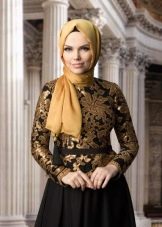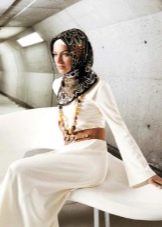Turkish national costume
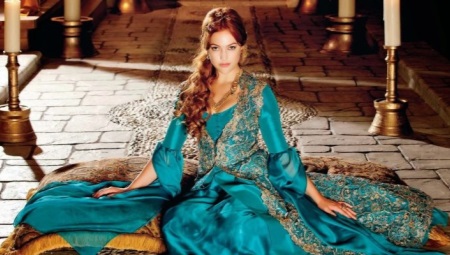
History of the Turkish national costume
The middle of the fifteenth century was marked by the beginning of the active development of Turkish culture. The reason for this was the conquest of Constantinople by Sultan Mehmet, after which the city was proudly called Istanbul.
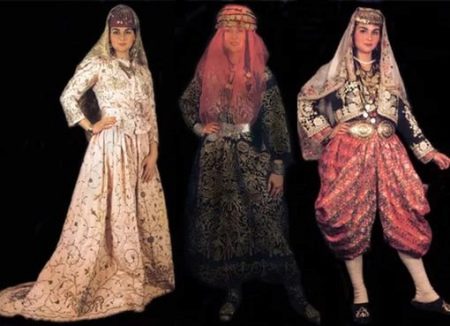
The Turkish national costume can be safely called a true work of art, and this opinion is shared by many historians and modern designers. For centuries, the outfits of the Ottoman Empire continue to haunt the minds of women striving for splendor.

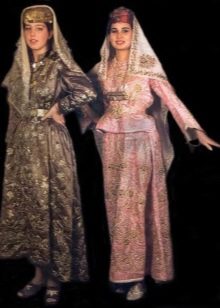

Turkey is distinguished by a variety of branches of culture, which amazingly manages to combine with age-old traditions. The design of the national costume was based on religious motives.
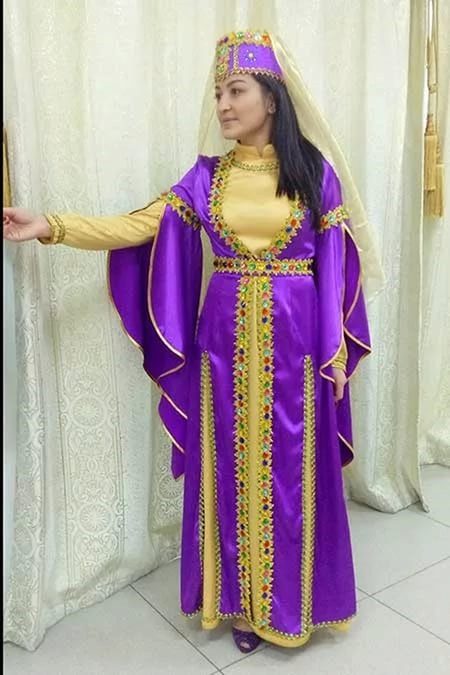
Turkish clothing helped to determine the social status of a person. The outfit fully reflected the level of the family's wealth, belonging to a particular religion, place of service and family status.
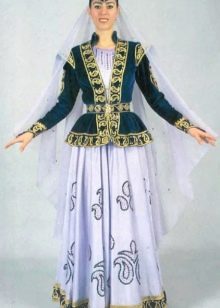
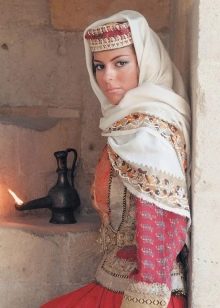
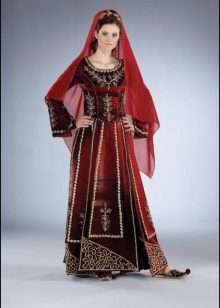
Every woman living on the territory of the Ottoman Empire was obliged to follow a decree called "ferman", which strictly indicated what kind of outfit should be worn. This rule extended to Christian women as well.

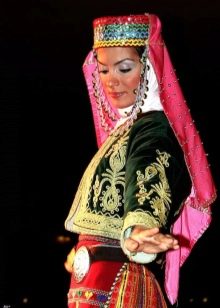
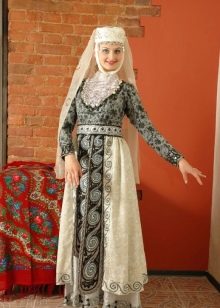
Ferman
Islam orders the representatives of the beautiful half of humanity to keep their beauty for a man, and on the streets to hide their dignity under special clothes. The representatives of the clergy, based on the commandments of the Koran, compiled the Ferman.
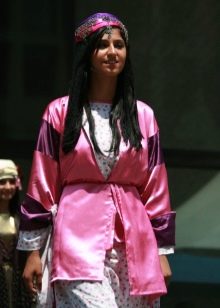
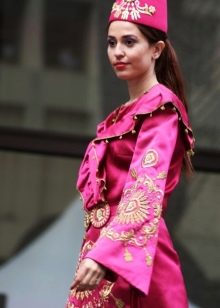


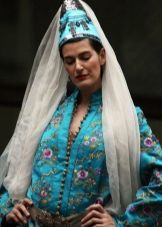
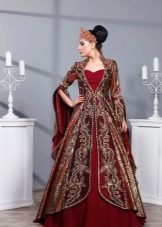
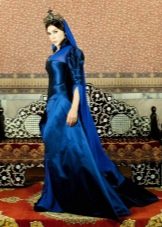
- Muslim girls were required to wear loose pants under their clothes, as well as loose shirts made of cotton or muslin. The collar of the undershirt could be either triangular or round.
- An obligatory attribute of the women's national costume is the chador. It is she who provides protection of beauty from the eyes of strangers.The veil covers the back and front shoulders, neck and face - only the eyes are allowed to be free of black fabric.
- For women of a different religion, the rules were slightly softer. Many Greek, Hungarian, Jewish and Armenian families lived in Turkey. The girls were allowed to wear the same loose pants in various colors (mostly blue and white) and a fustanella skirt. Greek women appeared on the streets in satin headscarves, and Armenian women in leather goods.
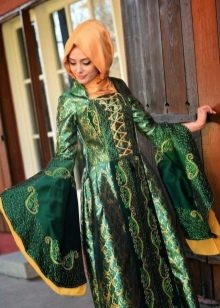


Distinctive features
The areas in Turkey were different from each other. In one city the population consisted mainly of wealthy merchants, in the second there lived not very wealthy merchants, in the third - only artisans. Therefore, each district could boast of some specificity of its national costumes. The main details of traditional Turkish clothing did not undergo changes, however, the style and colors were different from each other.
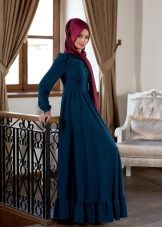

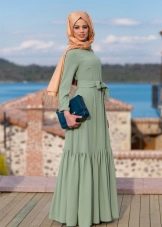

An excellent example is the baggy salwar pants, which in Russian are commonly called harem pants. This element of the wardrobe remained unchanged throughout the Empire - from Eastern Anatolia to the Marmara and Aegean regions.
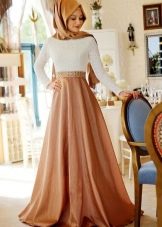

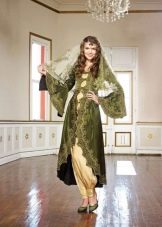

The Turks appreciated luxury, and this feature is reflected in the colors of their clothes. Although men preferred dark national costumes (brown, purple, blue, green), their outfit still looked rich and delightful due to embroidery and other decorative elements.

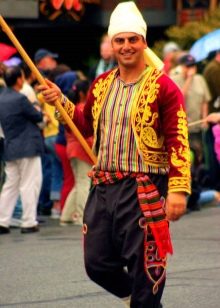

Style
Despite the fact that the national women's clothing of Turkey was multi-layered, Muslim women still managed to give the silhouette a mysterious attractiveness, to create an alluring atmosphere around them, unusual for other girls.
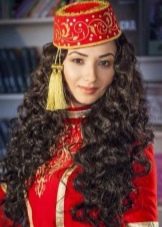
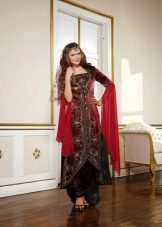

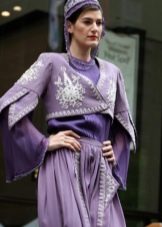
Turkish costumes were different from Arab garments. The Arabs wore unnecessarily massive, voluminous things that completely hid the silhouette, so that it was impossible to guess even a person's physique. In Turkey, they took a different path. The style of the outfit made it possible to see the main outlines of the silhouette.

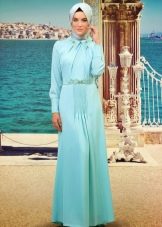

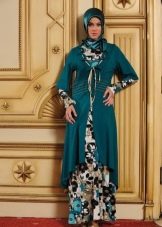
To create national costumes, exclusively natural materials of high quality were used. The most popular were fur, velvet, taffeta and silk. Women from noble families could afford to decorate clothes. To fulfill the wishes of a fashionista of the 16th century, silver and gold threads were used.
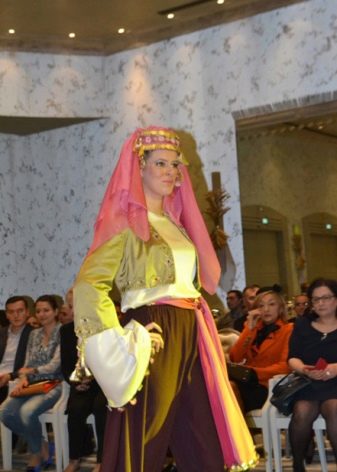
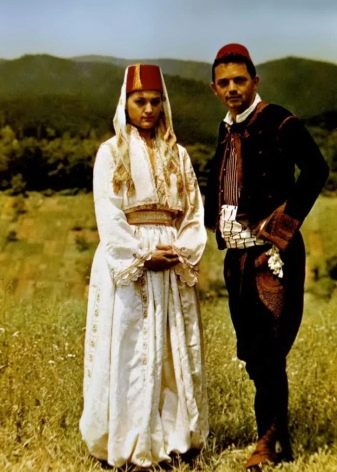
Turkish clothing has become the mainstay of some design decisions in the future. For example, it was in the Ottomans that they invented the structure of the sleeve, called the "bat". This design is still in demand among fashionistas of the twenty-first century.
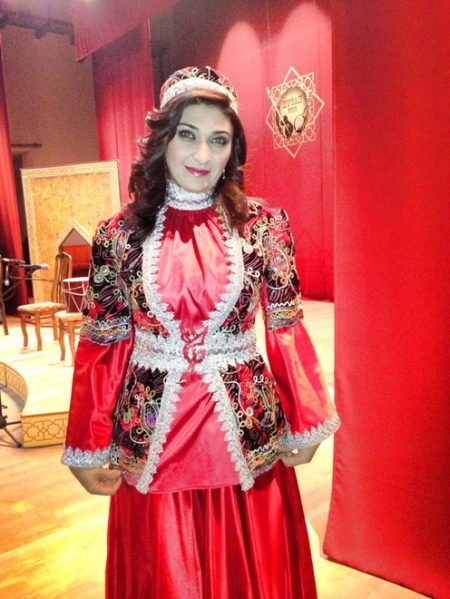
Variety of models
Many items from the Turkish wardrobe were considered universal. Both women and men had the right to wear wide trousers, the same underwear shirts, belts and jackets.
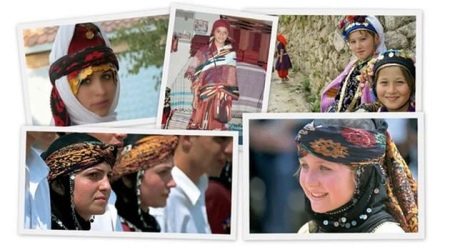
The girls wore aprons over the dress. This detail attracted attention with its remarkable appearance. The apron was decorated with folk ornaments - mostly floral designs, each of which was endowed with a deep meaning associated with legends.
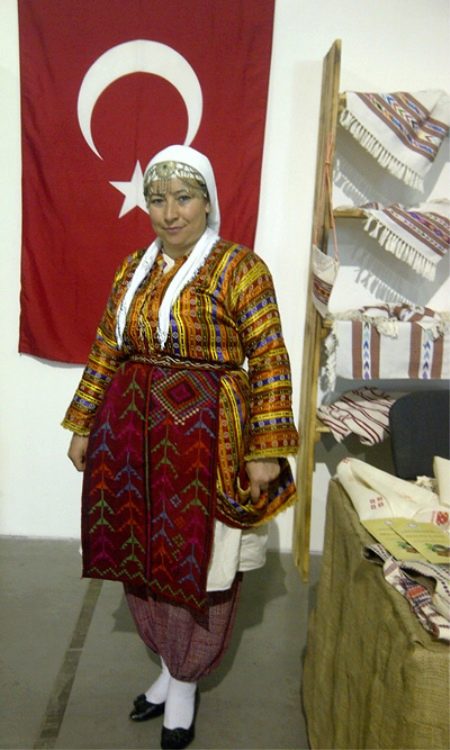
The men's costume included a sash, which was needed not only for jewelry. It served a practical function. In the pockets of the belt, the Ottomans put money and other things that might be needed during the day.
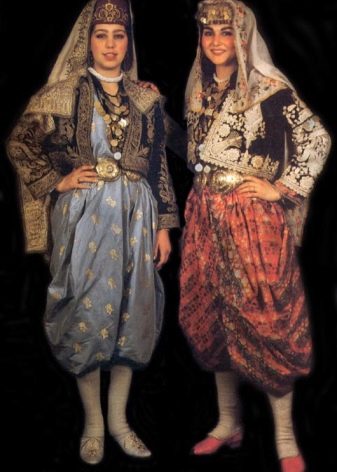
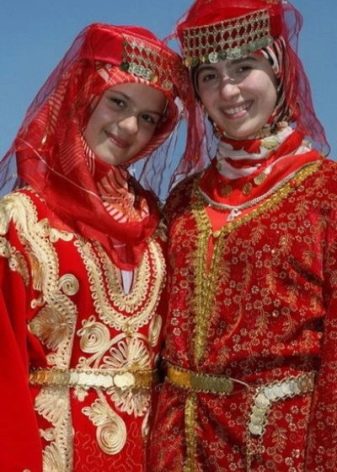
The sleeves of women's dresses were supposed to completely cover the hands up to the wrist. However, now the Turkish national costume has undergone many modifications and does not have such rigor. The length of the dresses has decreased several times - the hem reaches the middle of the calf, in some cases even slightly higher, and the sleeves can be raised.
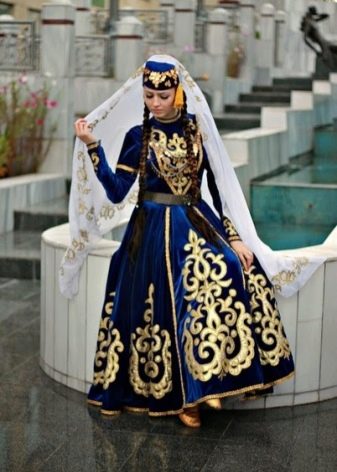

Children's variations
In the 16th century, national Turkish costumes for girls were almost identical to adult outfits, with the exception of gold and silver embroidery and buttons made of precious stones. Children wore more modest dresses and suits, although they looked chic.Expensive and rare materials for children's clothing were not used.
Nowadays, young Turkish women dress in about the same knitted outfits with rhinestones.
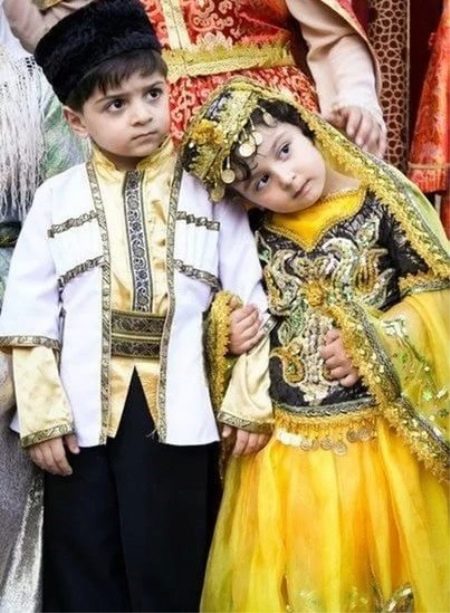
Jewelry and shoes
Muslim canons do not prohibit women from decorating themselves with various accessories, and girls have always taken advantage of the absence of this prohibition.
- The main accessory was the scarf. To make it look beautiful, instead of one Muslim headscarf, several multi-colored products were used, as a result of which a nice design of several layers was obtained.
- Many wore an interesting headdress, to the front of which an air veil was attached.
- The girl's leg was tightly fitted with high socks - always with bright handmade embroidery.
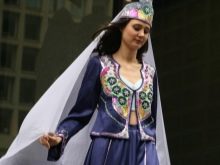
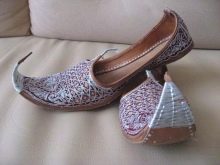
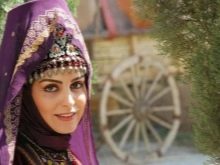
Muslim men also did not miss the opportunity to decorate their national costume. The Turks in the military field were distinguished by their chic daggers and sabers attached to their belts. The heads of the men were covered with turbans and fez.
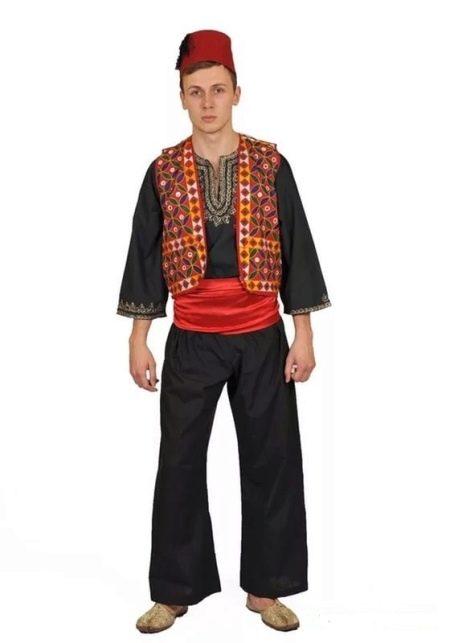
The shoes were made durable and reliable. The beauty of the shoe was expressed in its severity. She emphasized the masculinity, the seriousness of the owner. Boots were sewn from the skin of bulls and rams.
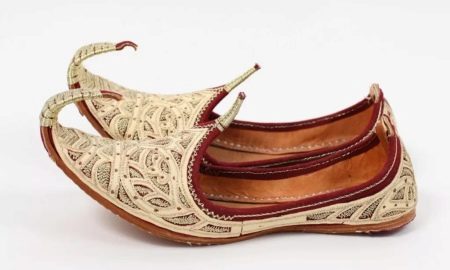
Traditions in modern times
Much has changed with the time of the categorical, even harsh in something of the sixteenth century. Morals have changed, and Turkish national costumes have not remained the same.
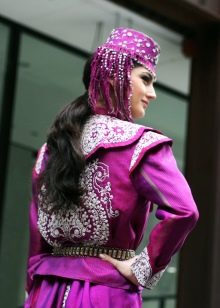

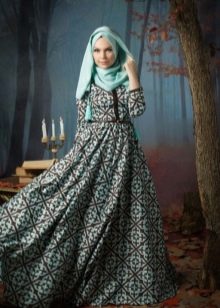
Women in Turkey have the right to stroll through the sun-drenched streets in outfits that amaze with their piercing, original colors. The shade of aqua is widespread. Geometric ornaments take pride of place on the jackets and headscarves of Muslim beauties.
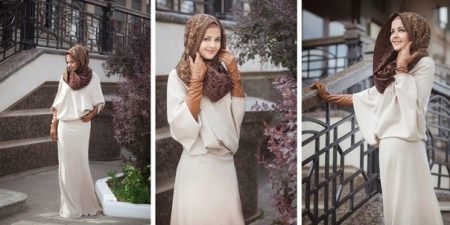
Reviews
The owners of Turkish national costumes are delighted. Surprisingly, even Christian women buy dresses in the oriental style. They need it for visiting historical festivals and theme parties.

The traditional outfit of Turkey provides a unique opportunity for every girl - to feel all the mystery and ambiguity of the Arabian night.


